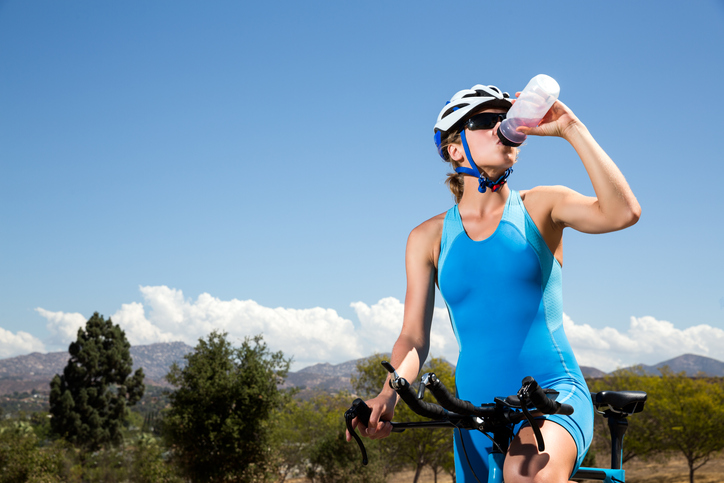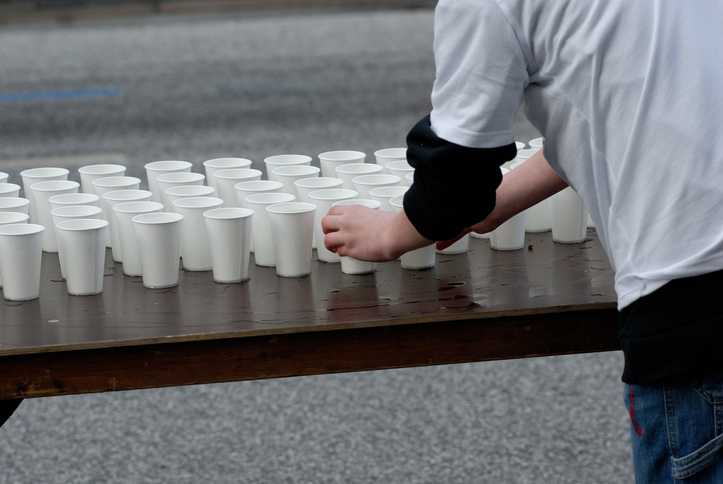COVID-comeback: Self-supported training and racing strategies
As we look forward to a summer of training and the possibility of racing, there are some new realities we'll face
 Photo by:
Getty Images
Photo by:
Getty Images
When racing resumes, it may look very different with the new norms of physical distancing in place. As race directors sort out just what can, and can’t, happen to support athletes on the course, athletes would be wise to train for self-sufficiency, so they aren’t caught unprepared. Now is the time to build your self-reliance just as you build your fitness.
If we are lucky, races may allow us to place our own special needs bags in a designated area that is self-serve. And, on training days, we can do shorter loops to re-load at the car or at home. But, if we’ve learned one thing over the past year, nothing is certain, and adapting is a required skill for everyone. Here are some solutions that will help during training and racing. Hold on…here’s what you may be facing.
Related: 4-Month can’t miss training program
On The Bike
- Ironically, after years of working toward reducing our aerodynamic drag, the self-sufficient triathlete will have to take a deep breath and accept that many of those efforts will be thrown out the window… for now.
- Long course triathletes will need to carry enough hydration to take them longer than in the past because there may not be aid stations with volunteers handing out bottles of water or sport drink as you pass by. That means loading up your bike with bottle cages. There will be extra weight and more drag, but that shouldn’t make you plan to take in less hydration. Everyone is facing the same situation, and unless you are riding a superbike with a built-in hydration system, you will end up with potentially five bottle cages – between your aerobars, on the down tube, seat tube and two behind your seat.
- An alternative to bottle cages on the bike is to wear a hydration pack on your body. Before you shudder with horror at the idea, keep in mind that you will most likely need one for the run, so keep an open mind! Some believe that wearing a jersey over a camelback will reduce the drag, so it’s worth a try. That tri suit might be stretched beyond its capacity, but it might be worth a try.
- What about nutrition? All those gels need to go somewhere, so making use of a bento box, jersey pockets, in the leg of your shorts or in your sport bra are all options worth trying. (Finally – one advantage the ladies can claim in having a sport bra that provides a convenient place to stash things!)
- Taping gels to the top-tube was once considered blasphemous, but here we are again. If you use bars, cut them in half and tape them to your bike or on the base bar under your armrests.
- Salt tablets pose a particular challenge when wearing them on your body and keeping them from getting lost – on the road or down your shorts. Snack-size Ziploc baggies will keep them dry – and if you seal it, then cut off one corner to shake one out at a time and twist the bag, it can be stashed on your bike or person more safely and kept dry.
- Don’t take a chance on leaving the flat pack behind. If you usually keep your extra tube, CO2 cartridge and multitool kit in a bottle cage, you’ll want to prioritize that cage for hydration and find another place to stash that gear. Taping it into a Ziploc bag and shoving it between the seat rails is one solution.
- Practice on training rides so you have your own system worked out before race day. You don’t want to find out on race day that you can’t throw your leg over those two bottles behind your seat when trying to get on or off the bike at the mount line.

On The Run
Most triathletes and runners prefer to carry as little as possible, so they aren’t weighed down and fumbling with bottles on the run. As with long training runs, the options in races for aid stations every few kilometers may not be there. Shortchanging your hydration and nutrition generally ends in disaster, and it only takes one bad experience to burn that lesson permanently into our psyches. Here’s how to avoid making a bad mistake:
- Hydration vests and camelbacks are worth their weight – and it can be substantial. Running with a 2- to 5-liter bag of fluid on your back takes some time to get used to. If you know there will be an option to refill your pack on the course, a smaller bladder is more comfortable to manage. Bring your sport drink powder or tablets in a snack-size Ziploc bag, and load up the pockets with your gels, chews, salt tablets.
- Putting sport drink in the hydration bladder is fine, as long as you clean it thoroughly after each training run to prevent mould from forming.
- Fuel belts with bottles are an option for shorter distances, if you don’t mind it around your waist and managing the bottles. However, unless you have the opportunity to refill the bottles, you may not be able to carry enough hydration for a longer run. Again, don’t take in less because of this…nothing good comes of short-changing your hydration and nutrition requirements. (And a lot bad can be the result!)
Other Considerations
- One of the greatest challenges of the past year with closures and lockdowns is the availability – or lack thereof – of public restrooms. This has resulted in more of us “getting back to nature” in ways usually left for desperate times. These are desperate times, and it’s better to be prepared. (This is where the guys can claim an advantage of convenience – sometimes!) For those “other” times, carrying a few baby wipes in a baggy might make a big difference at some point.
- Races in the “good old days” often had amenities like sunscreen (and sometimes “sunscreeners” to help get those hard-to-reach areas), chafing cream, Tylenol, gels, flat cola, and other comfort measures available on the course. The benefit of wearing a hydration vest is they come with pockets for stashing these sorts of amenities.
- Race finish areas might look more like your training day recovery, which means post-race meals are taken to go, and amenities are limited strictly to medical emergencies. That parking lot picnic you packed in your car is good training for this scenario, and it’s worth finessing so you are getting proper recovery nutrition at the right time. A cooler bag with a frozen water bottle, extra water, recovery powder and a packed lunch makes a lot of sense to nail down.
Sandie Orlando is an associate coach with CLPerformance Training.
